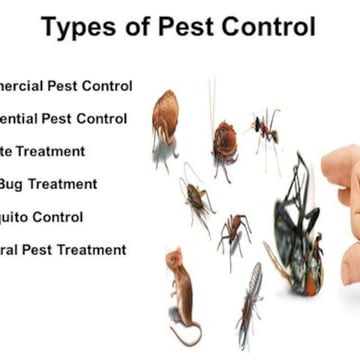The 25-Second Trick For Pest Control
Table of ContentsEverything about Pest ControlWhat Does Pest Control Do?Some Ideas on Pest Control You Need To KnowLittle Known Questions About Pest Control.The Best Guide To Pest Control
Limitations of Chemical Administration Be able to examine insect problems, identify if management is necessary, and make suitable suggestions utilizing IPM methods. Be acquainted with different methods of insect management - their advantages and limitations.This chapter reviews (IPM), a method that makes use of expertise about bugs and their, practices, nonchemical techniques, and chemicals to manage bug troubles. Additional info concerning IPM for specific plants is included in chapters that focus on those plants. Parasites in a garden or landscape may consist of pests and termites, weeds,, mammals, and birds.
Pests and weeds, nonetheless, play a duty in the. After growing a yard or establishing a grass, the natural procedure of plant succession starts to improve and nonnative plants.
What we call "bugs" are component of an all-natural system at work. Only people think about specific types parasites when they take place where they are not wanted.
Some Known Details About Pest Control
Bugs vulnerable to a pesticide were quickly eliminated, leaving immune ones to breed and multiply. It became clear that pesticides alone would not solve all pest issues. Rather, overuse of pesticides triggered the growth of resistant parasites. Scientists started to establish a new technique to pest control. This new technique was defined as integrated parasite administration (IPM).
An IPM strategy allows some degree of insects in the setting. Pests are a lot less likely to survive a program that uses several approaches of minimizing their populaces. Integrated insect monitoring was first recommended by entomologists because bugs were the first team of insects to prove tough to manage with chemicals alone.
pest and host properly. and take into consideration economic or aesthetic injury. A limit is the point at which activity must be taken. a therapy strategy making use of mechanical, social, biological, or chemical controls, or a combination of these strategies. success of therapies. IPM has expanded beyond insects to management of all pest populations: weeds, illness microorganisms, and mammals.
Indicators on Pest Control You Should Know
Administration rather than elimination of insects is the goal. An IPM strategy begins with a careful assessment of each insect infestation.
Clover growing in a grass may be seen as an undesirable weed, however as a legume it is manufacturing nitrogen for the dirt and the flowers are supplying nectar to honey bees and various other. Resistance for some weeds may become part of an IPM strategy. may be eating the fallen leaves of a plant, however when they are recognized as the larvae of Eastern tiger swallowtail butterflies, their damage might be tolerated so we can enjoy the beautiful butterfly.

The 2nd most essential tool in insect administration is very early intervention. Being present and watchful in the garden makes sure very early detection. Responding to issues rapidly, prior to they have time to increase, requires a much less dramatic treatment. The third most vital tool is recordkeeping; tracking what takes place in the garden makes it possible for a gardener to identify patterns and make informed choices.
Getting The Pest Control To Work
Many safe, functional, nonchemical approaches of plant protection and insect administration might lower or eliminate the need to spray. Other techniques learn the facts here now are most beneficial when used with pesticides. To carry out monitoring techniques correctly and to minimize losses, gardeners ought to understand the kinds of bugs that strike plants and recognize pest biology.

Conducting a dirt test and applying just the suggested quantity of fertilizer and lime makes best use of the advantage to the plant while lessening troubles associated with excessive use of fertilizer - Pest Control. Treatment the soil with a number of inches of compost secures the plant in numerous ways: minimizing soil water loss to evaporation, lessening weed competition, offering nutrients, and developing a suitable atmosphere for earthworms and microbes that keep the soil loose for origins and damage down organic material to release nutrients
If mulch touches the trunk, it can produce a means for voles, bacteria, and fungi to attack the plant. Do not use manure or compost that has not completely decayed as a leading clothing because it can encourage unfavorable insects. Research study recommends that farming is detrimental to soil structure.
The Facts About Pest Control Uncovered
If tilling is regarded required, consider doing it in the loss you could try this out when the life cycles of numerous parasites brings them near the surface area. At the surface area, bugs become revealed to the weather condition as well as birds and various other natural adversaries.
Comments on “The 5-Second Trick For Pest Control”